Last updated on May 28th, 2025 at 12:00 am
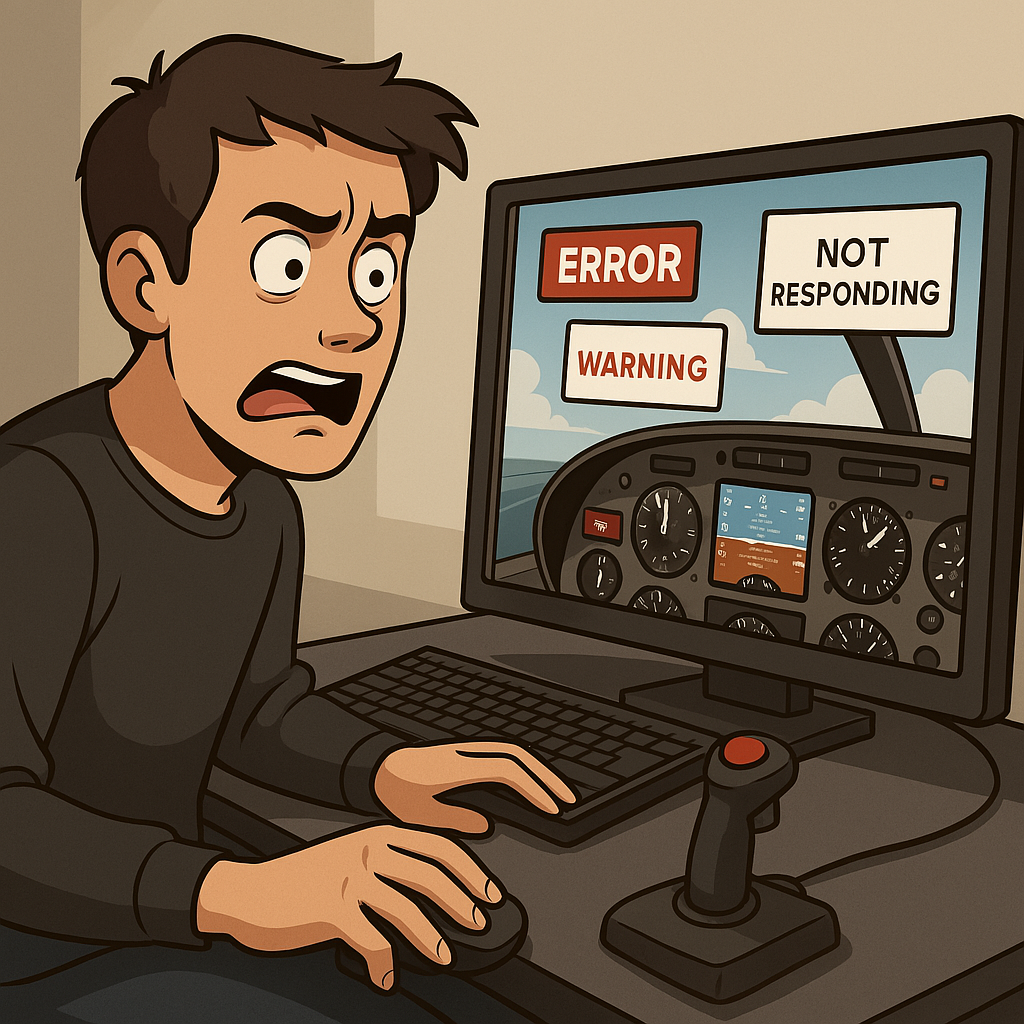
Diving into the world of flight simulators? Hold up a moment and consider beginning with tutorials. They’re not just preliminary steps; they’re crucial for building the fundamental skills you need before tackling complex flights. Think of them as the essential pre-flight briefing that ensures you’re not flying blind.
In flight simulators, understanding the basics through tutorials is key. These guides cover everything from basic aircraft control to the intricacies of in-flight systems. Skipping these tutorials is akin to jumping into the deep end without knowing how to swim, leaving you struggling more than necessary.
Many beginners are tempted to jump straight into high-stakes scenarios or busy virtual skies without a solid grasp of the basics. It’s similar to skipping the tutorial level in a video game—you miss out on essential tips and tricks that set you up for success.
See the tutorials as your flight school’s first class where you learn the ropes, the controls, the checks, and the tempo of handling an aircraft. The payoff? A smoother, more enjoyable takeoff into your virtual aviation adventures. For a comprehensive beginner’s guide, consider watching this tutorial series on Microsoft Flight Simulator.
If you’re just beginning your journey into the world of flight simulation, our comprehensive Getting Started With Flight Simulation: A Step-by-Step Guide provides all the basics you’ll need to start on the right foot.
Pre-Flight Checks: The Essential Start to Every Flight
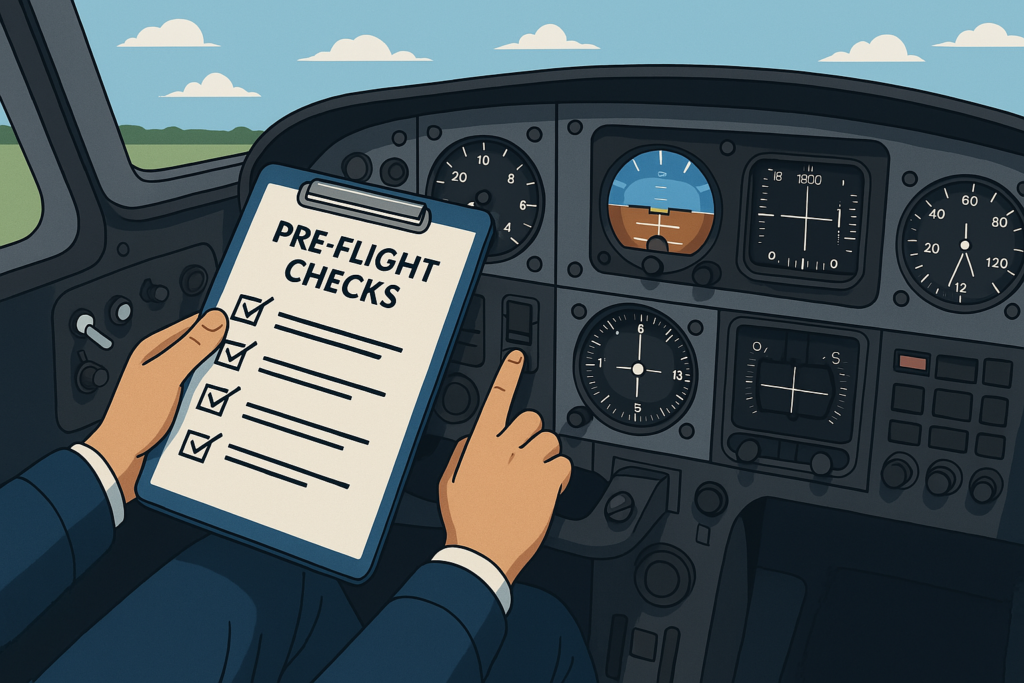
Remember the old saying, “Failing to prepare is preparing to fail”? It’s especially true in flight simulation. Skipping pre-flight checks can lead to unexpected problems, much like setting off on a road trip without checking your car’s oil or gas levels.
Before you take to the skies, take a moment to thoroughly review your equipment and settings. Make sure your controls, configurations, and flight plan are in perfect order. Treat your simulator with as much respect as a real aircraft—it’s a practice that pays off in the realism and satisfaction of your flight experience.
Pre-flight checks are vital, not just for professionals but for every pilot. They ensure that everything is aligned correctly, systems are functional, and your journey begins smoothly. This diligence not only enhances your safety but deepens your understanding and enjoyment of the simulation.
Embrace the detailed process – flick through those switches, calibrate the yokes, and double-check the instruments. Yes, it’s time-consuming, and yes, it might seem like overkill, but mastering this ritual builds your skills and enhances realism.
When you incorporate these checks into your routine, it’s not just about mimicking real-world pilots; it’s about diving deeper into the immersive experience that flight simulators offer, ultimately making every virtual mile you cover all the more rewarding. To delve deeper into pre-flight procedures, refer to this detailed guide on mastering pre-flight preparation.
Enhancing the Experience: Realism and Essential Hardware
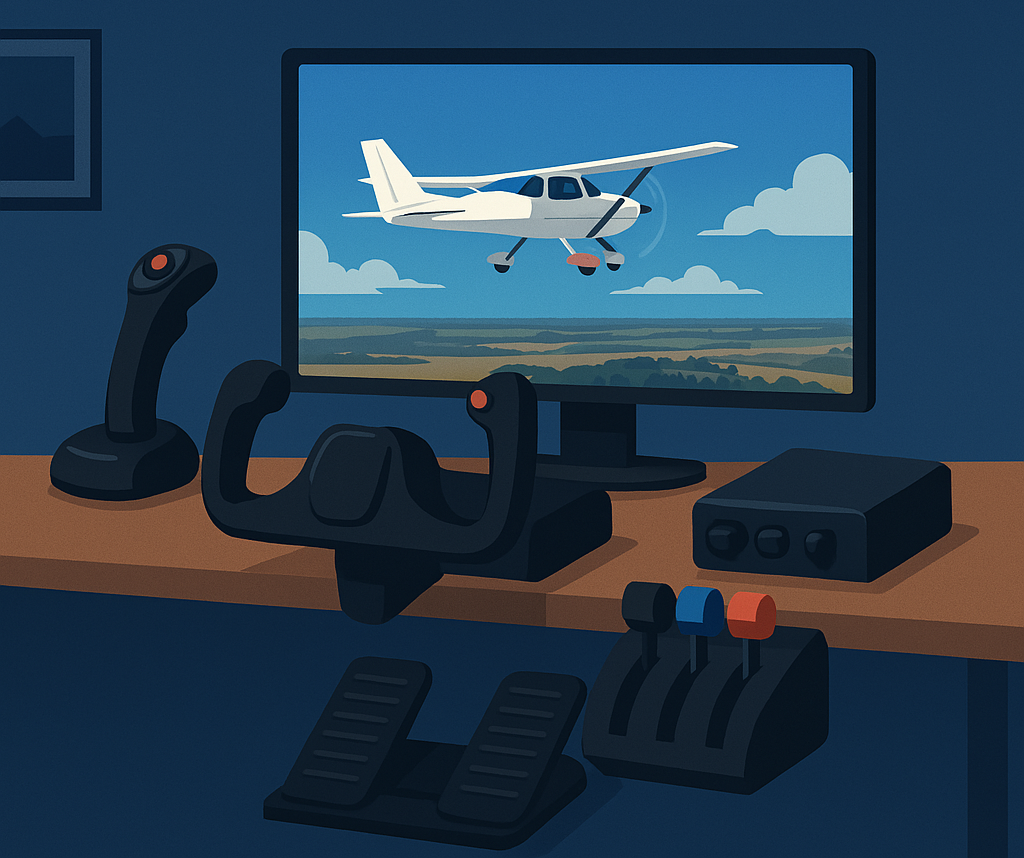
Setting the simulator to realistic conditions is like adding seasoning to a dish – it elevates the whole experience. Too often, newcomers go for the easy road and simplify settings, missing out on honing critical flying skills.
The real magic happens when you immerse yourself in realistic scenarios. Embracing the complexity of true-to-life settings challenges you to adapt and improve. Not to mention, it prepares you for handling situations just like a seasoned pilot.
Consider investing in the right gear to really up your simulation game. A good joystick, yoke, or even rudder pedals add layers of authenticity to your flying. It’s like switching from training wheels to a full-on racing bike.
Yes, flying with just a keyboard and mouse can work, but nothing beats the control you get with dedicated hardware. It turns your simulation experience from merely “cool” to absolutely riveting. Ready to build your own flight deck? Dive into our detailed guide on How To Set Up Your First Custom Flight Simulator to create a setup that meets your specific needs.
Watch out for the temptation of add-ons! It’s understandable – they can be exciting and flashy. But a bunch of unnecessary trimmings can bog down performance. Start simple, get the essentials, and slowly build as your confidence and interest grow. To further enhance your setup, consider exploring our guide on the Essential Software And Tools For Novice Pilots, which lists the key software and tools every beginner should have.
For recommendations on flight simulator hardware suitable for beginners, explore this curated selection.
Weather and Emergency Scenarios: Prepare for the Unexpected
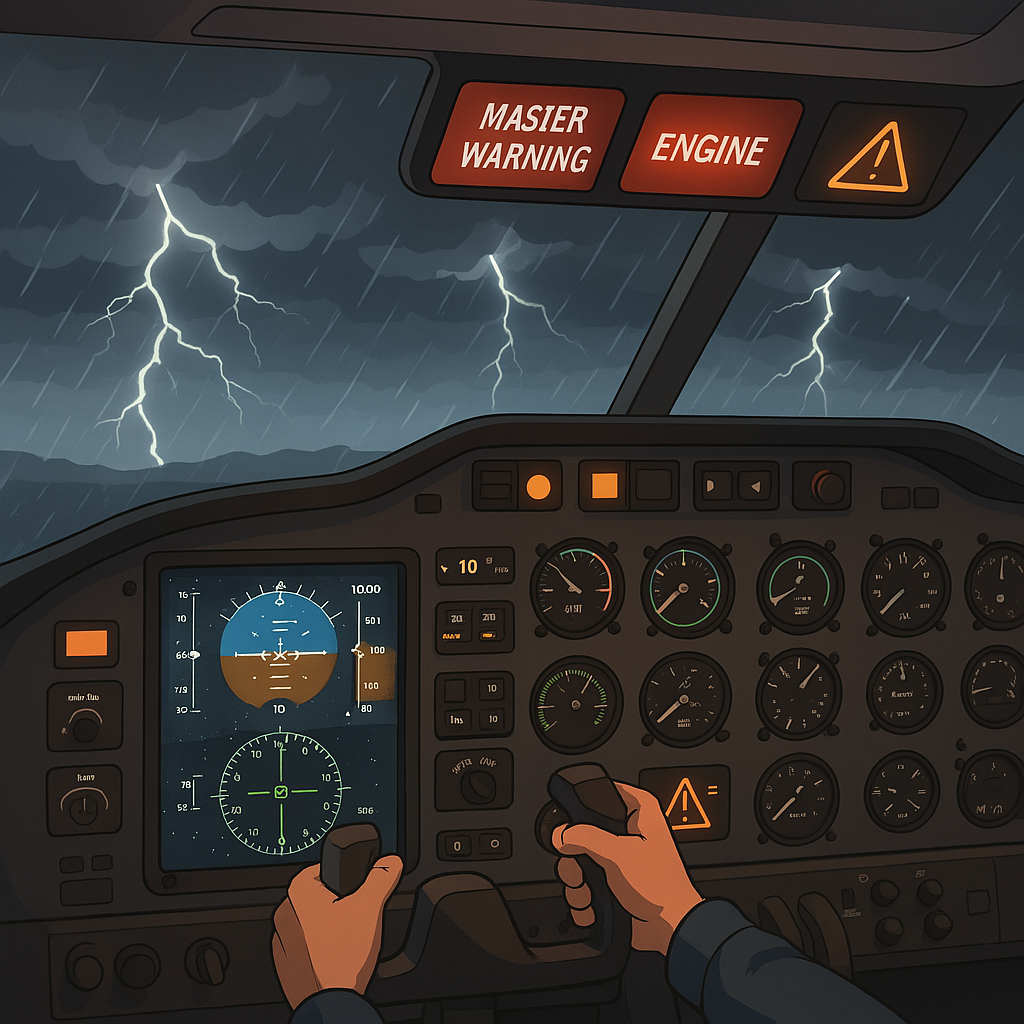
Weather plays a more dynamic role in flight simulators than just setting the scene; it’s a vital part of the challenge. Many newcomers neglect to utilize weather settings or adjust their strategies accordingly, which can dramatically alter the flight experience.
Learning how different weather conditions impact flight performance is crucial. Practicing in various conditions enhances your adaptability and overall skill as a simulator pilot. Don’t limit yourself to clear skies—embrace challenges like rain, snow, and wind, and learn to navigate through turbulence and adjust your flight plan on the fly.
And about emergencies—they add a critical layer of realism and skill to your experience. While simulations are enjoyable, understanding how to handle emergencies is essential. Regular practice with emergency procedures, like dealing with system failures or sudden weather changes, prepares you for anything the simulation might throw your way.
Practice handling system failures, engine troubles, or unexpected weather changes. The more you simulate these scenarios, the more prepared you’ll be. Think of it as your virtual fire drill – crucial training that could potentially save the day when the simulator throws curveballs at you. Learn how to adjust and utilize weather settings effectively in this tutorial.
Mastering the Skies: The Importance of Air Traffic Control and Flight Planning
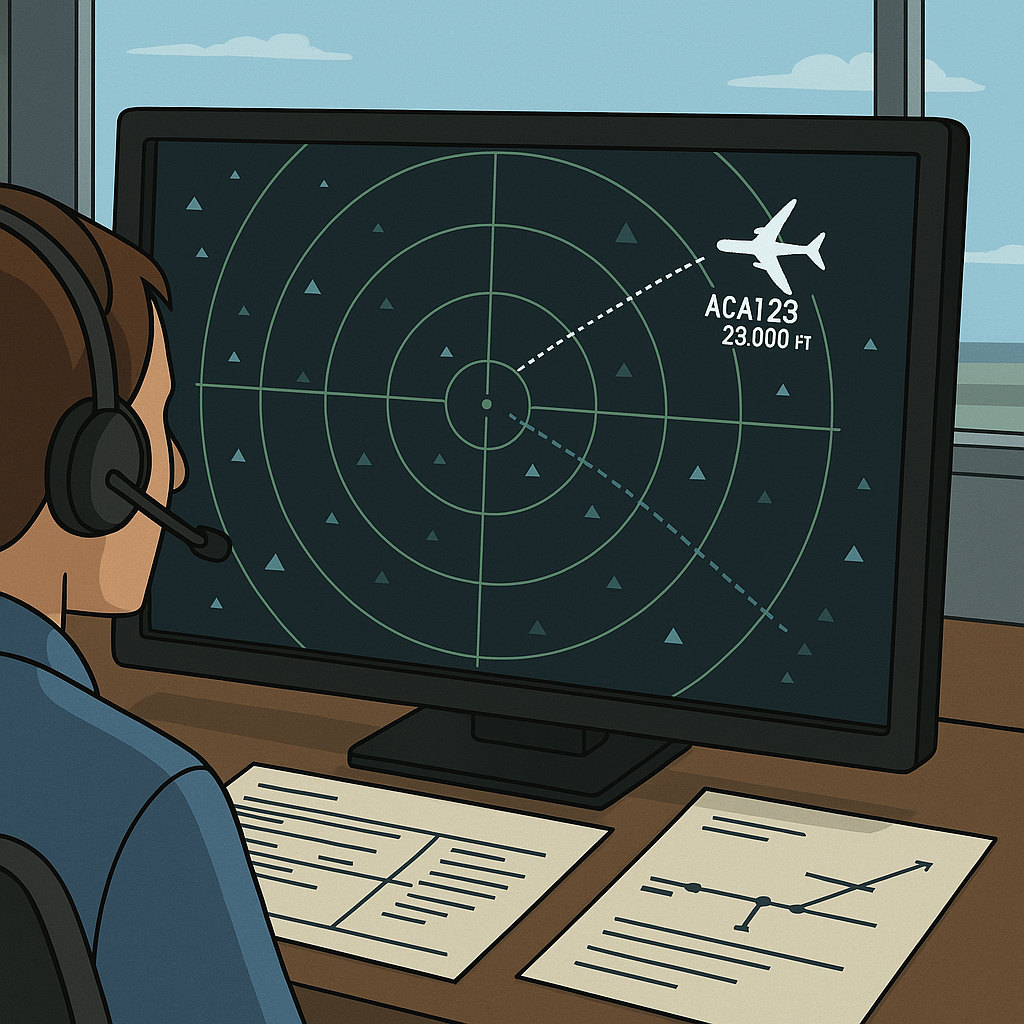
Navigating the virtual skies is not a solo ordeal. Air Traffic Control (ATC) plays a pivotal role in guiding you through the intricacies of your flight. Ignoring ATC is like muting your GPS in an unfamiliar city – not exactly a recipe for success.
Following ATC instructions ensures that you stay on course and maintain proper altitude. It adds an enriching layer of communication and discipline to your flight, mimicking real-world scenarios where every pilot relies on traffic control for guidance.
Creating a solid flight plan is another cornerstone of successful simulation. Beginners often overlook this, rushing to take off without a roadmap. A carefully crafted flight plan gives you foresight into your route, anticipated altitude changes, and even fuel management. For a beginner’s guide to ATC communications, this video provides clear insights.
Starting with small planes can be less overwhelming and a fantastic way to build your foundational flying skills. It allows you to grasp the basics before leveling up to larger aircraft with more complex systems. Choosing a simulator that’s right for beginners can be daunting. Check out our list of the Top 5 Beginner-Friendly Flight Simulators – Perfect for New Virtual Pilots to find one that’s easy to start with.
Effective flight planning combined with attentive ATC communication transforms your simulation experience from just steering a plane to orchestrating a seamless and realistic flight. It’s about understanding the journey, not just the destination, and mastering every mile of your virtual adventure. Finding the perfect simulator can significantly impact your learning curve. For more insights on picking the best one, read our guide on Choosing The Right Flight Simulator For Your Needs.
Final Thoughts:
There could definitely be more mistakes out there, but these are some of the most common ones that trip up new flight simulator users. Nobody gets everything right the first time—and that’s okay. What matters is learning from them and improving your overall flying experience.
If you’ve come across a mistake that’s not listed here, feel free to contact me. I’ll do my best to help out or add it to this guide so others can benefit too.

This is such a spot-on take. Setting the simulator to realistic conditions really is like adding seasoning—it brings out the full flavor of the learning experience. Too often, people go for the easy mode and miss the golden opportunity to sharpen real-world reflexes and decision-making skills.
What’s exciting is that this kind of immersive training might not just be for hobbyists or pilots anymore. Many futurists are predicting that flying cars will become mainstream, which means this could very well be the future of learning to drive—or fly—for everyone. The more we embrace realism in simulations now, the more prepared we’ll be for the transportation shifts just around the corner.
Investing in solid gear is like going from a video game to an actual flight school. It bridges the gap between imagination and reality, and in a world rapidly evolving toward airborne commuting, that kind of preparation is invaluable.
Hi Iris,
Thank you for your insightful comment! You’ve perfectly captured why realistic simulator settings are crucial—they prepare us for real-world situations by honing crucial reflexes and decision-making skills.
I totally agree with your views on the broader implications for non-pilots and the future of transportation. As flying cars become reality, skills from high-fidelity flight simulators will be important. Investing in quality simulation gear bridges the gap between virtual training and real-life aviation skills, preparing us for a world where airborne commuting is mainstream.
Thanks again for sharing your thoughts. I look forward to seeing how these advancements unfold. Happy flying!
I’m not a pilot and don’t really intend to learn to be one. However, I am a very curious person, and this article did catch my attention. Sounds like the tutorials could be very helpful for someone wanting to learn to fly an airplane. I’m sure that many people would love to know a lot about flying a plane during an emergency. Even I have thought of that scenario. I’ve read about preflight checks in many books, and I found your remarks very interesting. “Failing to prepare is preparing to fail” is a great quote to add to the post. Your remarks about some of the common mistakes are interesting and, I imagine, very pertinent to someone when first learning about flying. All of us should take to heart information on what mistakes to not make when learning something new and especially something dangerous like operating an airplane. Your site looks like you are providing some good and useful information,, and is easily navigated. I do really like your logo – its cool! Good Job – Shirley
Hi Shirley,
Thank you for your thoughtful feedback! It’s wonderful to hear from someone who finds the world of aviation intriguing despite not aiming to become a pilot. I’m glad the article sparked your curiosity and you found the tutorials on preflight checks and common mistakes helpful. Our goal is to educate enthusiasts on avoiding common errors, especially in the virtual world.
The quote “Failing to prepare is preparing to fail” highlights the importance of diligence in aviation, where safety is paramount. It’s fantastic that you appreciate learning about these processes, even theoretically, as it can be crucial for safety-conscious travelers.
I’m happy you like the site and the logo! We strive to make our content accessible and useful for everyone, whether they’re enthusiasts or curious learners like yourself.
Thanks again for stopping by. Feel free to explore more and share any thoughts or questions you might have!
Happy exploring!